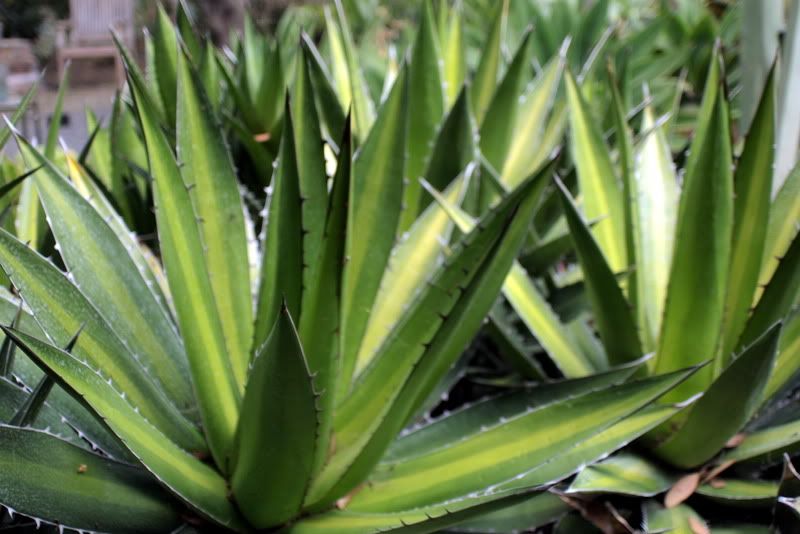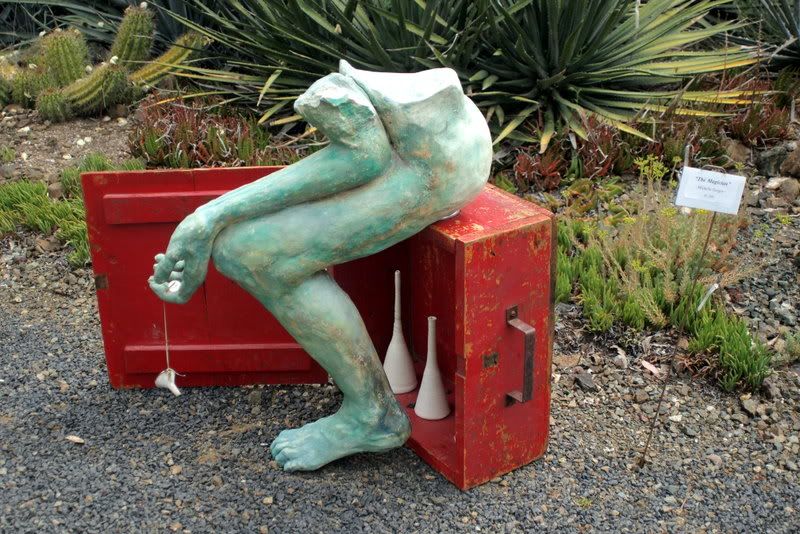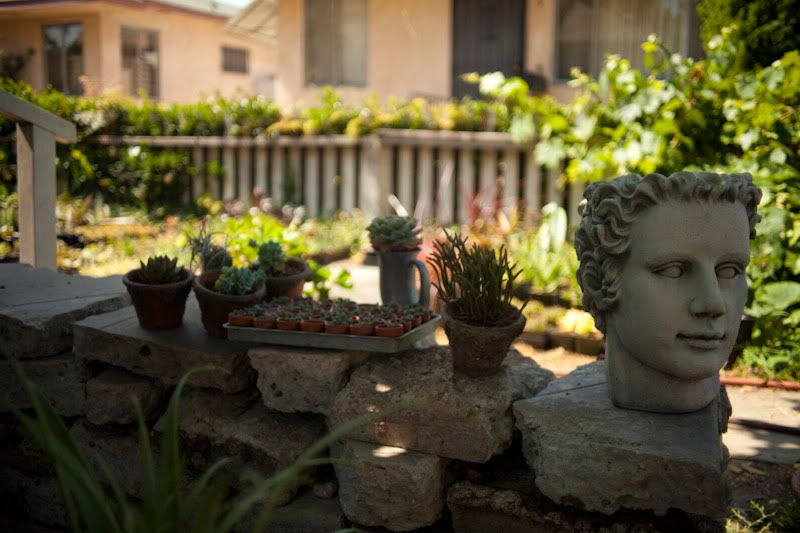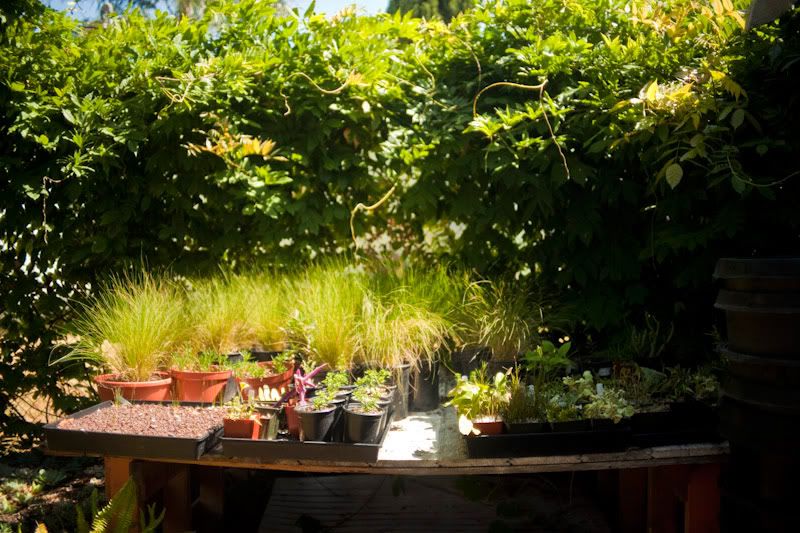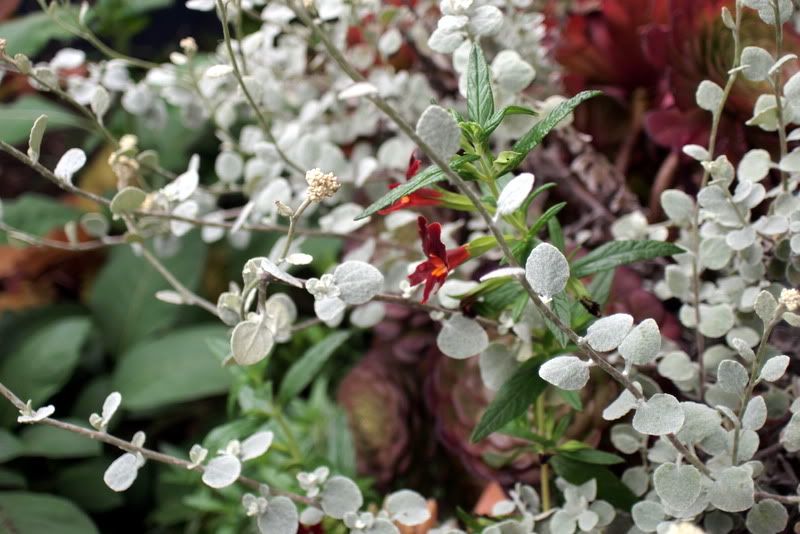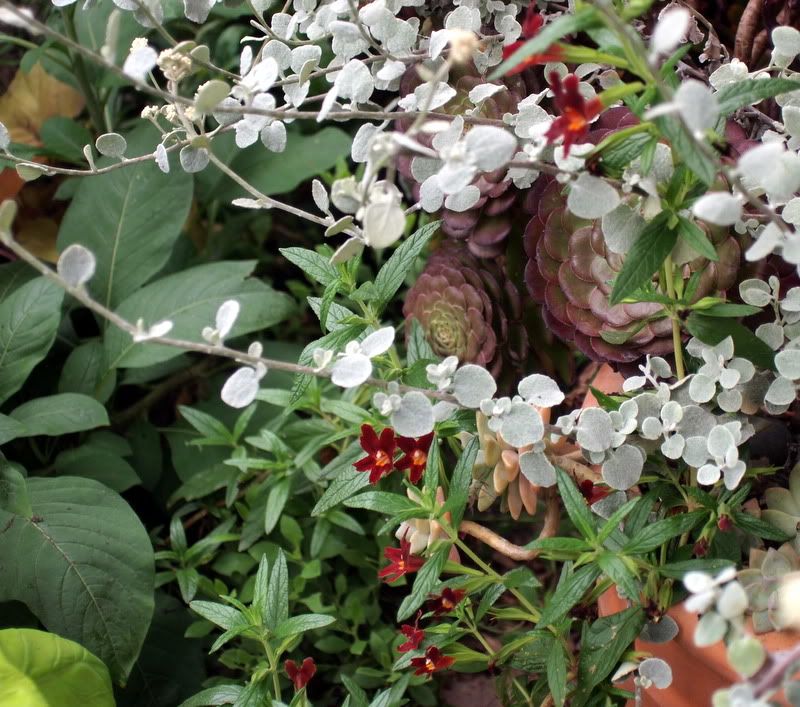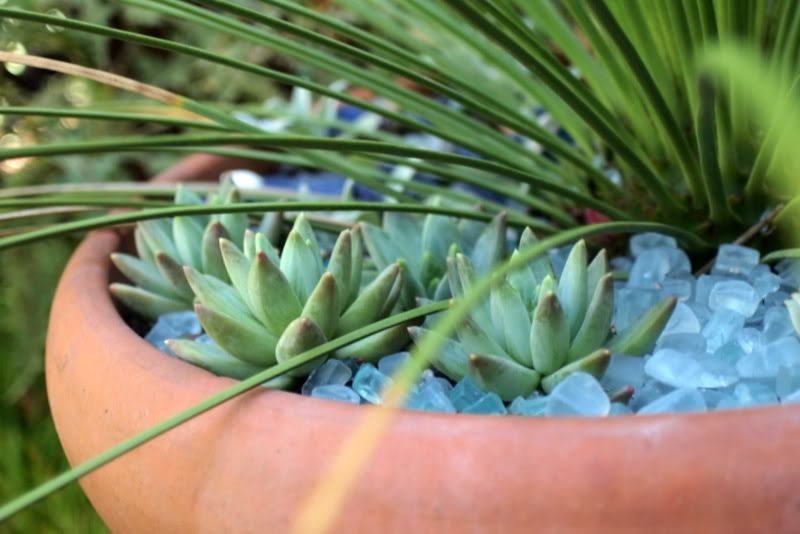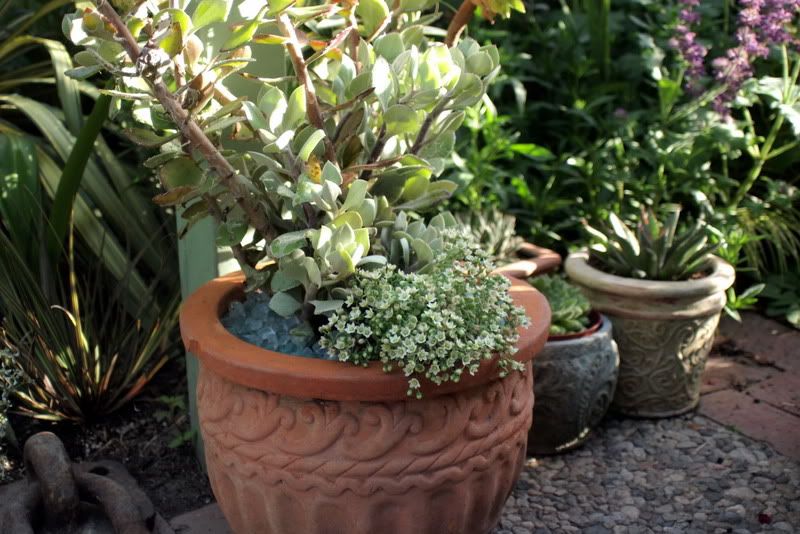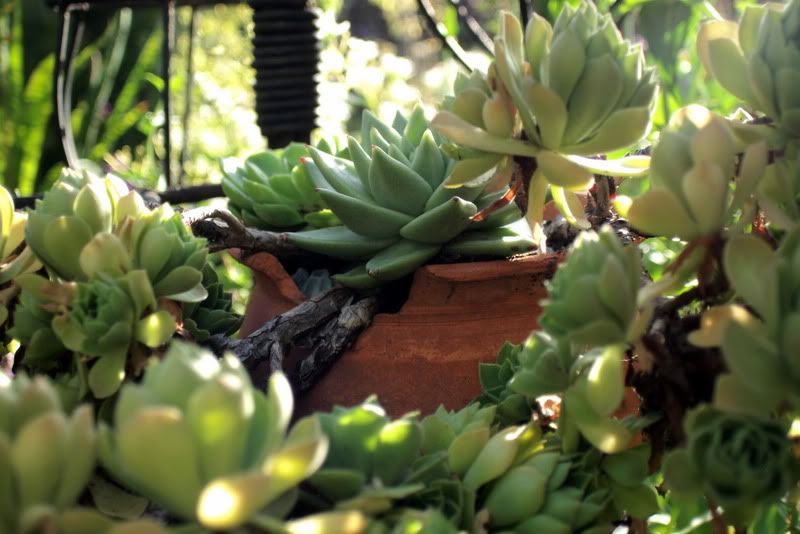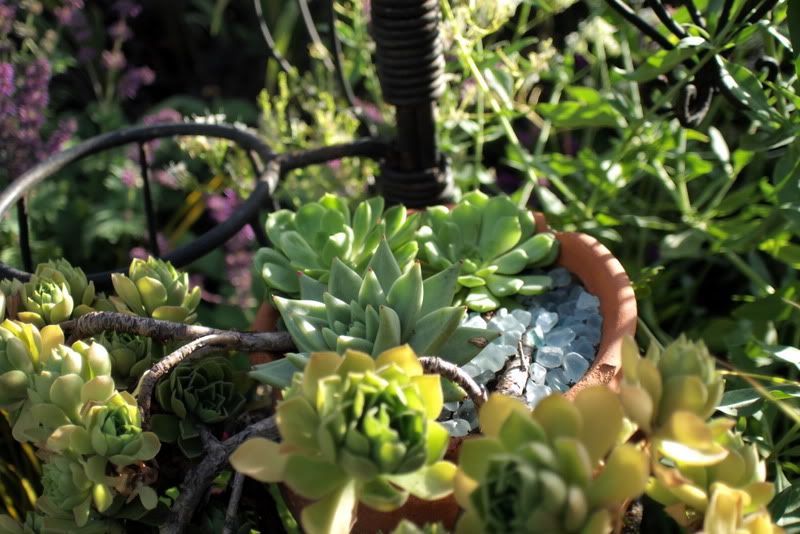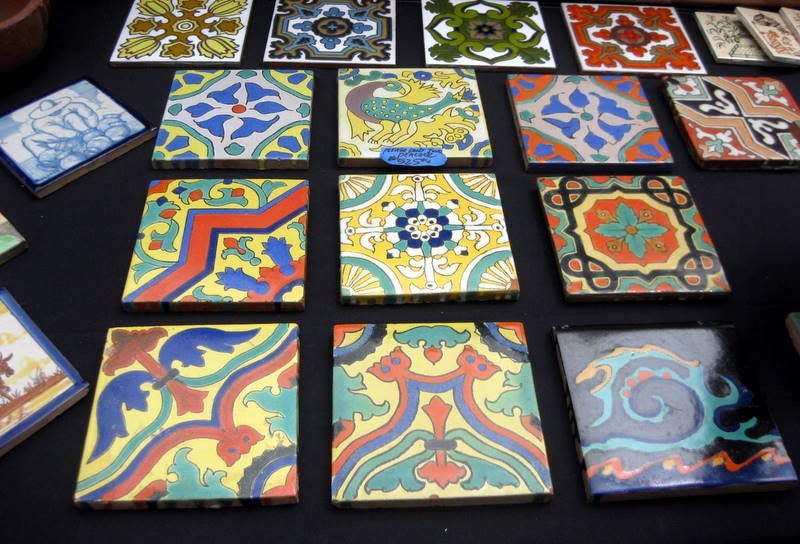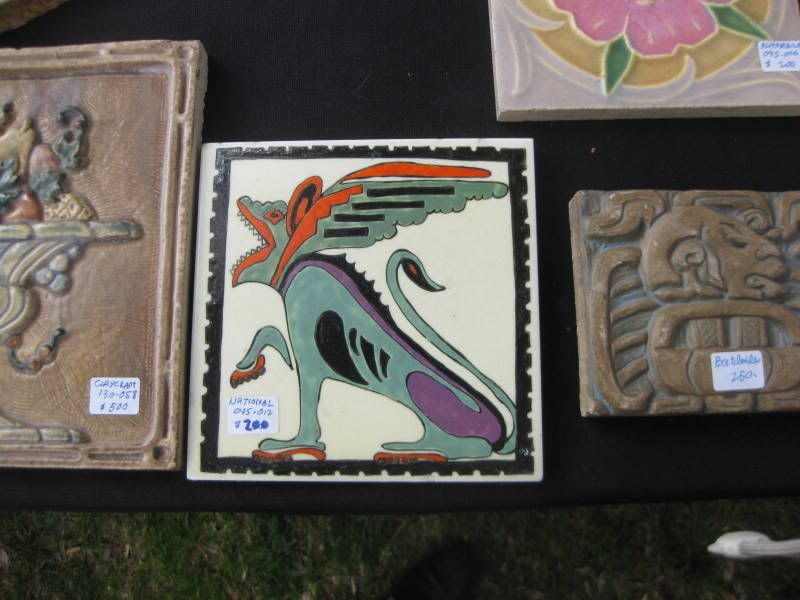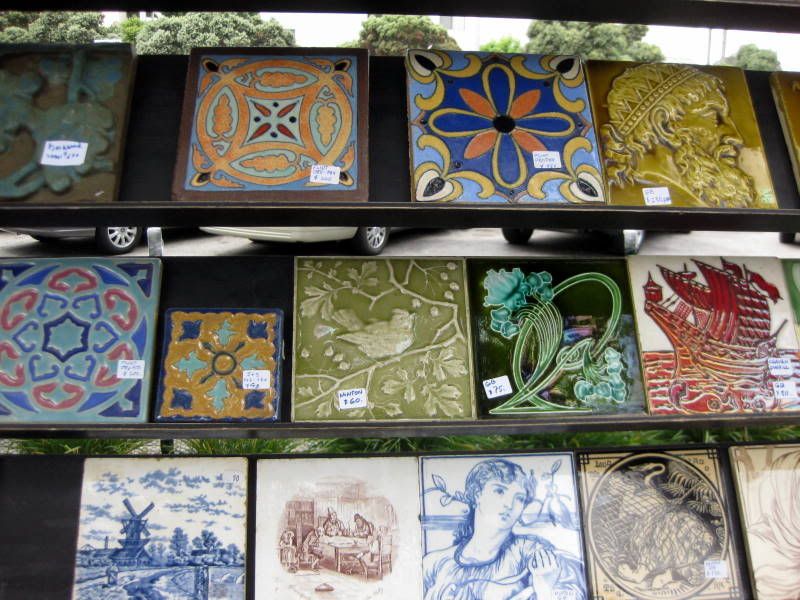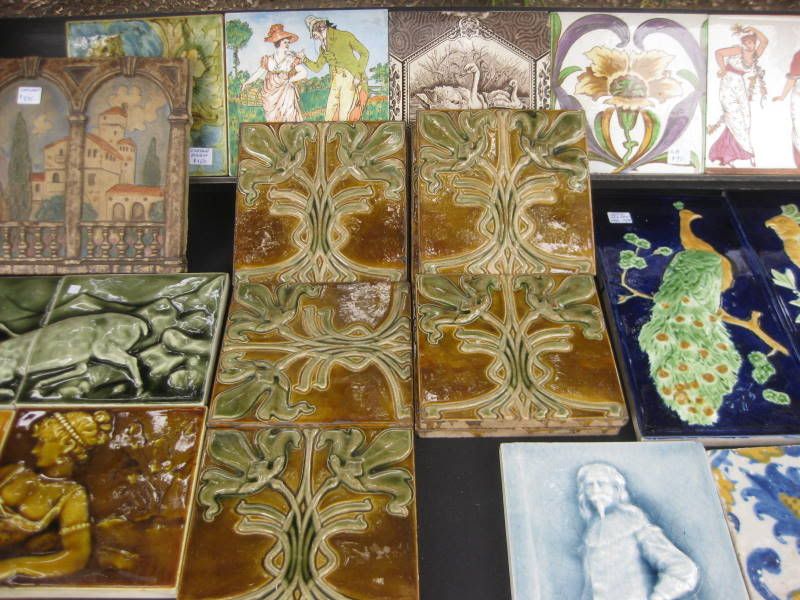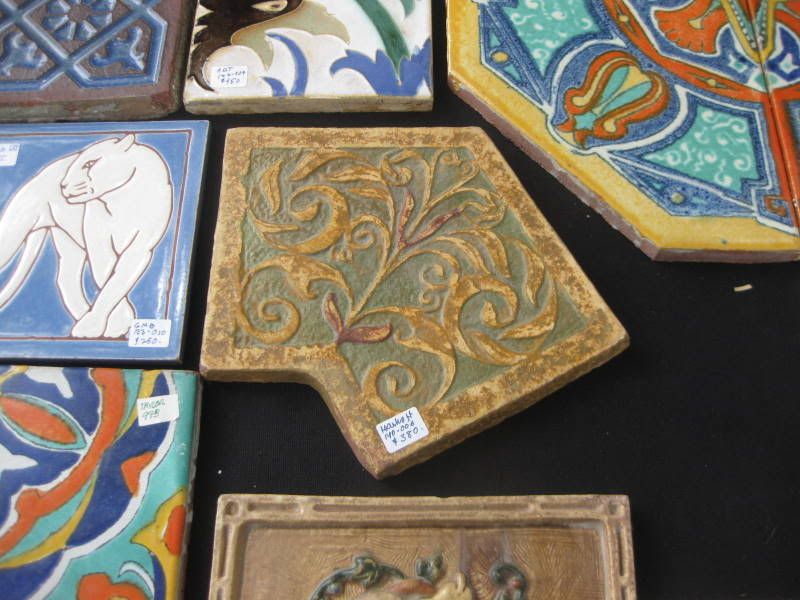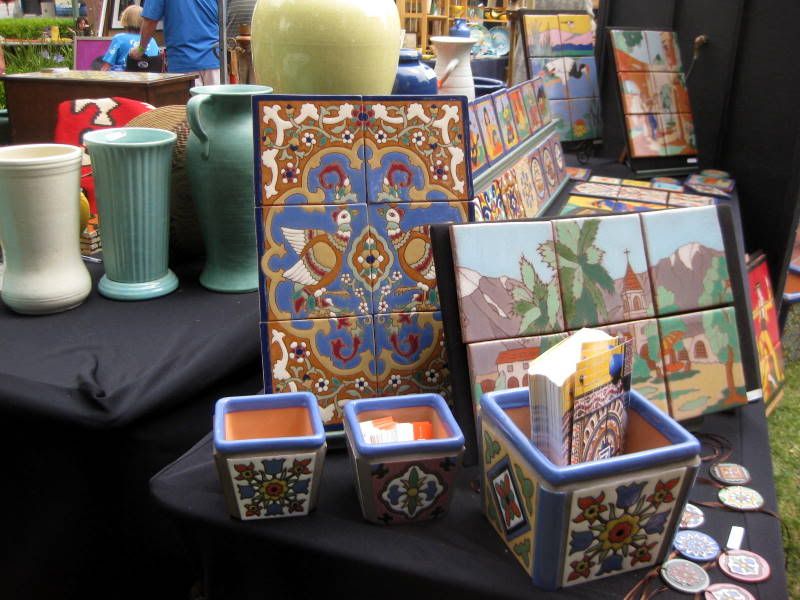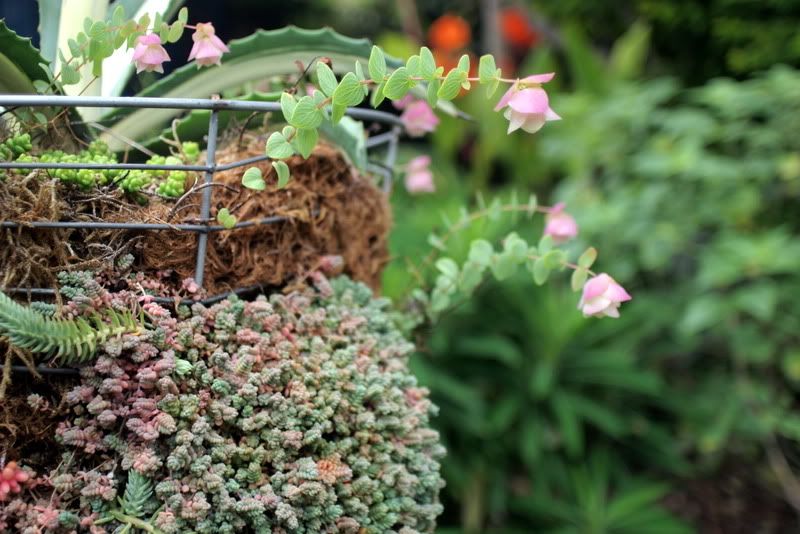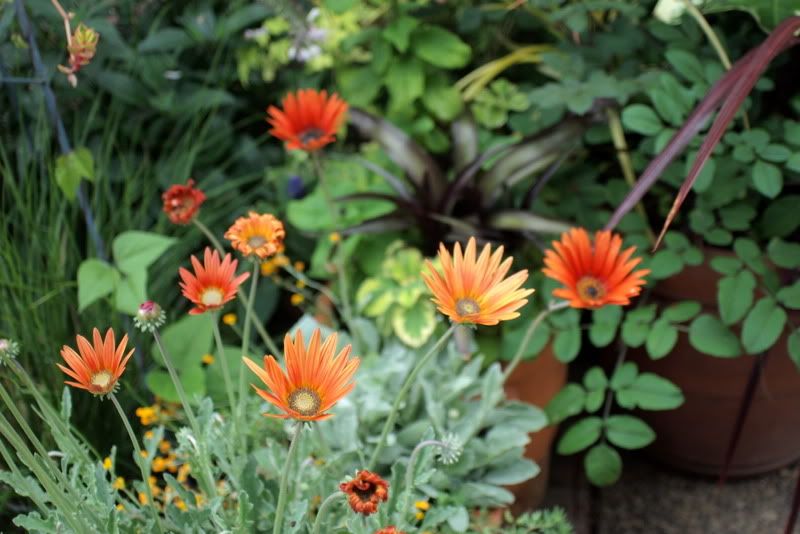I have this one dahlia that came back this spring. Bought at a spring 2009 garden show. I’ve pored over the skimpy 2009 garden notebook but apparently didn’t write down the name, if it was even labeled. A font of information as usual, but aren’t dahlias nice? Doesn’t its exotic looks make you want to wrap your head in a turban like Gloria Swanson and throw on a caftan? Or maybe since the dahlia is from Mexico, perhaps dressing Tehuana style like Frida Kahlo would be more appropriate. Heck, if summer finds me in anything other than dirty gardening jeans, it counts as festive.
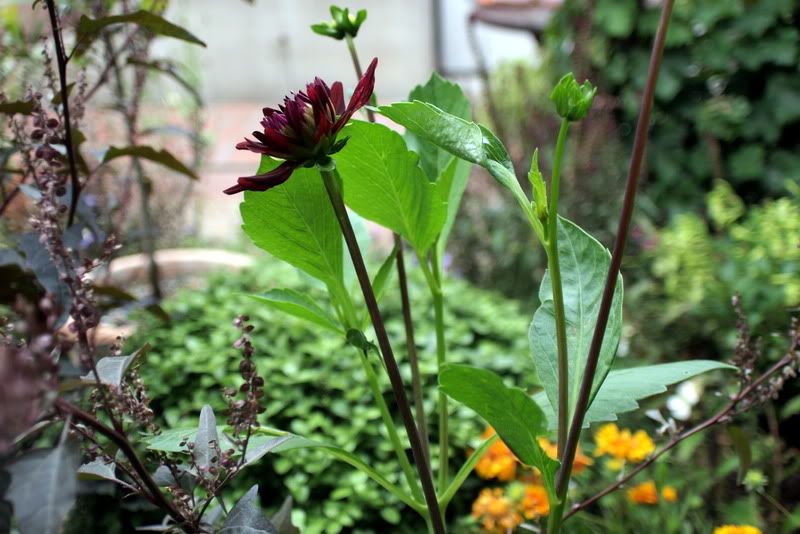
The dahlia is deep mid bed, so the oblique view is not artistic but just a reluctance to step into the garden for a better shot. Clay compacts surprisingly fast. And don’t let this long-necked beauty’s voluptuous looks blind you to the essential requirement of firm support. Unseen in this photo is the gauche use of a length of rebar for staking. One well-grown, well-supported dahlia can put on quite a lengthy show in a small garden.

Some dahlias do well wintering over in the garden in zone 10. Frost isn’t a problem because there isn’t any, but heavy, wet soil can be. I had a ‘Thomas Edison’ who loved wintering over in situ, and I see dahlias grown in the ground year-round in the neighborhood. It’s case-by-case experimentation, because some dahlias simply will not tolerate overwintering in the ground. All three tubers from 2009 were wintered in pots, all came through firm and looked ready to grow, but only this one wasn’t kidding. They were all this color, so no matter really. I’d guess this one might be classified a waterlily type, but I could be wrong since I don’t bother much with the various classifications. My only requirement is that the flower be on the smaller side, not the ginormous dinnerplate dahlias, and I confess to pursuing the darker-petaled, burgundy colors. The height of luxury is choosing them “in the petal,” which I had the good fortune to do many years ago at Swan Island’s annual Dahlia Festival, which is held later in the summer, August and September.
And these exotic beauties are absolute pigs for compost, the more manure in the compost the better.
